From the Rock to the Medina: Gibraltar to Tangier
Gibraltar - Home Sweet Home
As we came within sight of the great Rock of Gibraltar, we both felt an unexpected sense of homecoming. After all our adventures through Europe, and knowing what was to come, we couldn’t wait to experience this little slice of England and all the familiarity it had to offer.
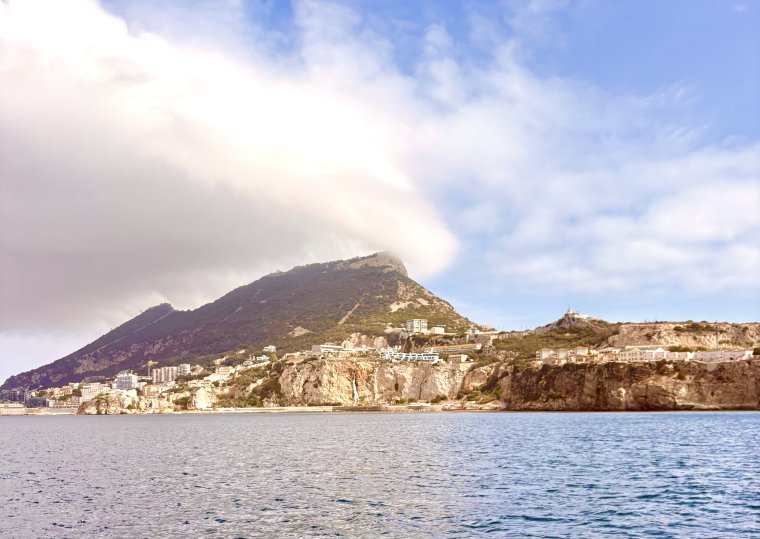
Rising abruptly from the sea, the limestone Rock has been a landmark for sailors for centuries, guarding the narrow gateway between the Mediterranean and the Atlantic. Its history is fundamentally British: ceded to Britain in 1713, it has remained a strategically vital outpost ever since.
This was our second visit to Gibraltar aboard Pérdika. Queensway Marina, where we stayed for ten days, was a quirky and loveable place. Tucked behind a complex of apartments, it felt like stepping through a curtain into a land that time forgot. Many vessels dated back to the 1980s and appeared not to have weighed anchor for much of their lives - frozen in time, slowly ageing alongside their faithful live-aboard owners. The marina had the air of preservation: a quiet enclave where time slowed, lending it a rare, nostalgic charm.
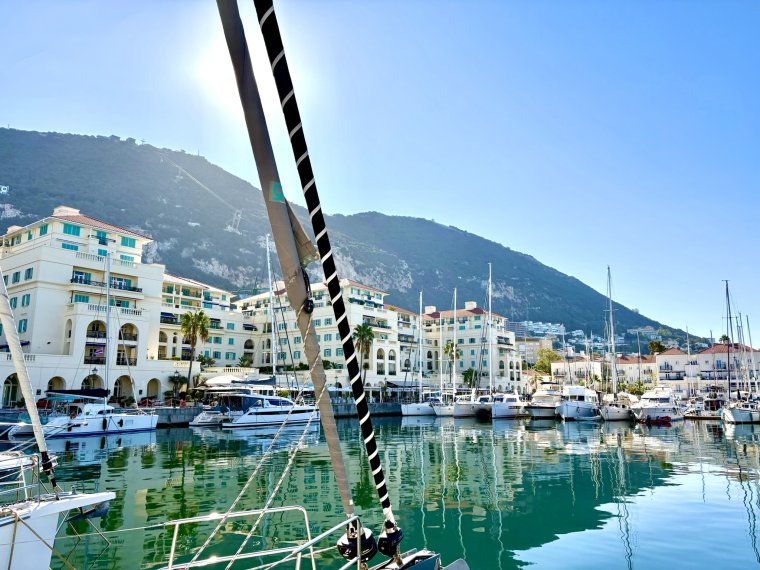 Queensway’s nostalgic charm
Queensway’s nostalgic charm
One of the small joys common to marinas we’ve spent time in are the trading posts and book exchanges. Gibraltar was no different, and I was delighted to pick up ‘In Arabian Nights,’ a travel book on Morocco - a perfect read to brush up on the culture, customs, and what to expect from our visit there soon.
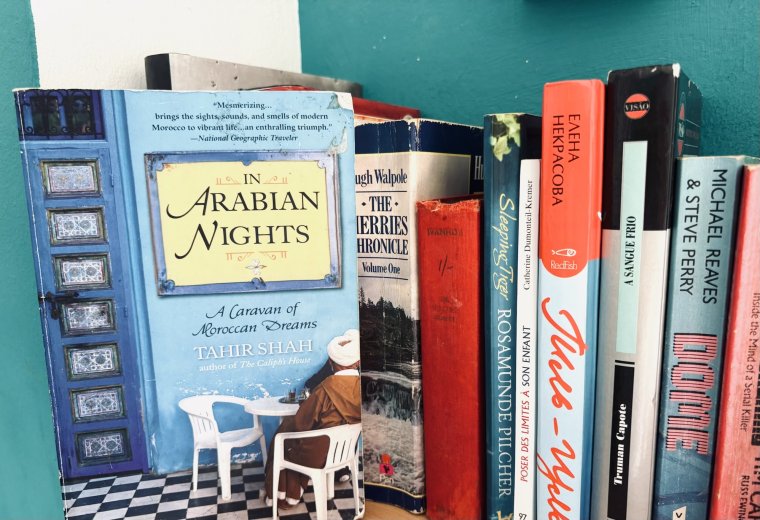 The marina’s multi-lingual book exchange.
The marina’s multi-lingual book exchange.
Like most tourists, we took the cable car to the Upper Rock, home of the Barbary macaques - Europe’s only wild monkeys. The troop forages on leaves, fruits and seeds with rangers providing supplementary food. Believed to have been introduced from North Africa centuries ago, they’ve long adapted to life alongside humans. Legend holds that Gibraltar will remain British while the macaques roam freely. We photographed their antics and caught a glimpse of their social hierarchy.
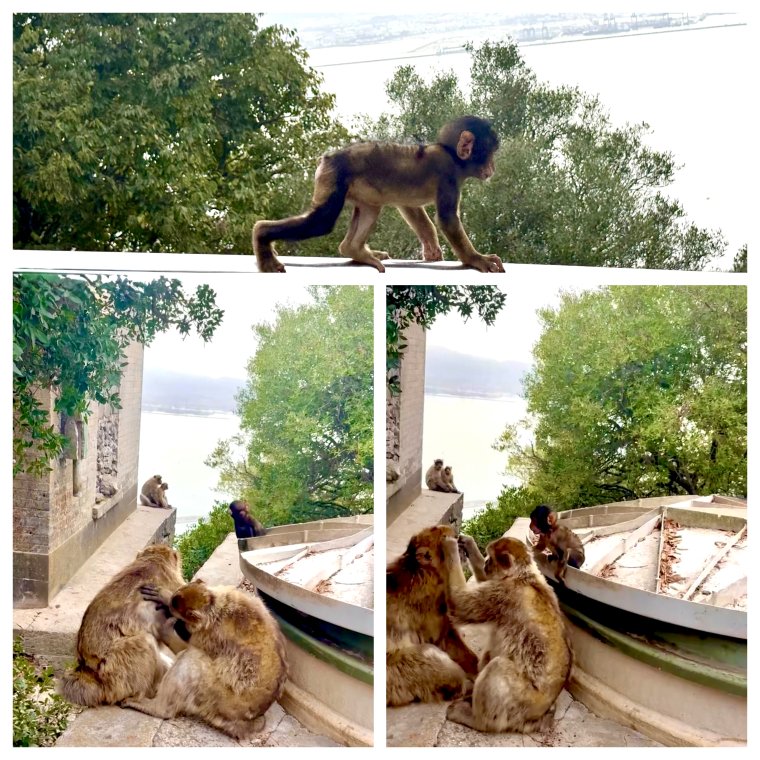
Our visit was also practical. Pérdika’s life-raft needed servicing, so with the help of fellow sailors we wrestled the 48 kg, eight-man raft off the rail, along the pontoon, and somehow into our tiny hire car for the trip over the border into Spain. We also installed a second autopilot. On our three week offshore passage, the autopilot will steer the boat for twenty or more hours a day, placing great strain on the system. Autopilot or steering system failures are frequently cited as one of the main technical reasons long ocean passages go awry, and hand-steering a yacht this size - 53 feet and 21 tonnes - 24/7 in heavy seas would push our crew to their limits. A second unit provides vital redundancy, allowing one to rest while the other takes over - a crucial safeguard before we cross the Atlantic.
Our friend Simon joined us for two weeks to help with the inevitable boat jobs and crew the next legs. We love having him aboard and have long called him “the Spaniel”, for his endless warmth, sociability and enthusiasm (not to mention that he woofs up our leftovers!).
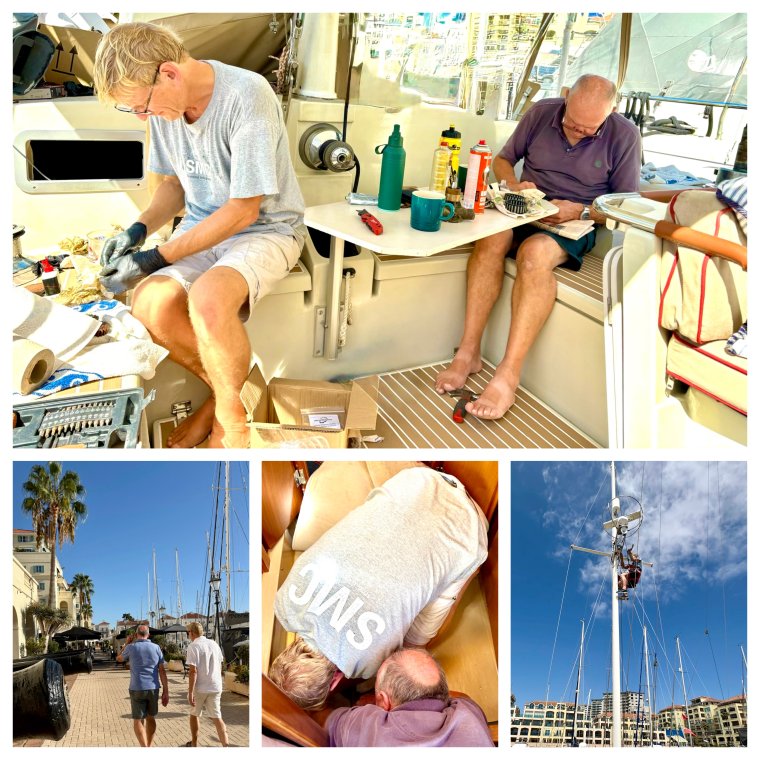 Boat maintenance: winches serviced, transducer cleaned, ship’s horn repaired -time for a well earned beer.
Boat maintenance: winches serviced, transducer cleaned, ship’s horn repaired -time for a well earned beer.
After ten restorative days in Gibraltar, it was time to say goodbye. We would miss brunches and hearty Sunday roasts at our local, and the comforting chatter of familiar English accents all around - but it was time to move on to Morocco.
Robin will take over the sailing story in his next blog, covering our passages from Gibraltar to Morocco and onward to the Canaries.
A Taste of Morocco
Arriving in Tangier, our first impression was of contrast: the calm order of Gibraltar gave way to a city buzzing with life. But our first hours were dominated by the slow, exacting ritual of checking in. Port police, customs, and immigration scrutinised every paper, photocopying endlessly, while Pérdika was boarded to ensure we carried no stowaways, drugs, or weapons - and only our permitted quota of alcohol. By 11pm, the chief of police, spotting our weary faces, smiled and said, “Nothing happens fast in Morocco.” He was right. For all its noise and colour, life here moves at its own unhurried rhythm, and patience is very much part of the passage. Having left Europe, we realised this level of formality would now be the norm for us - and for Pérdika.
We could feel Tangier’s layered history everywhere - Phoenician stones beside Arab archways, French cafés under Moorish tiles. Romans, Spaniards and the British have all had their turn here, and the result is a city that feels like a meeting point between worlds.
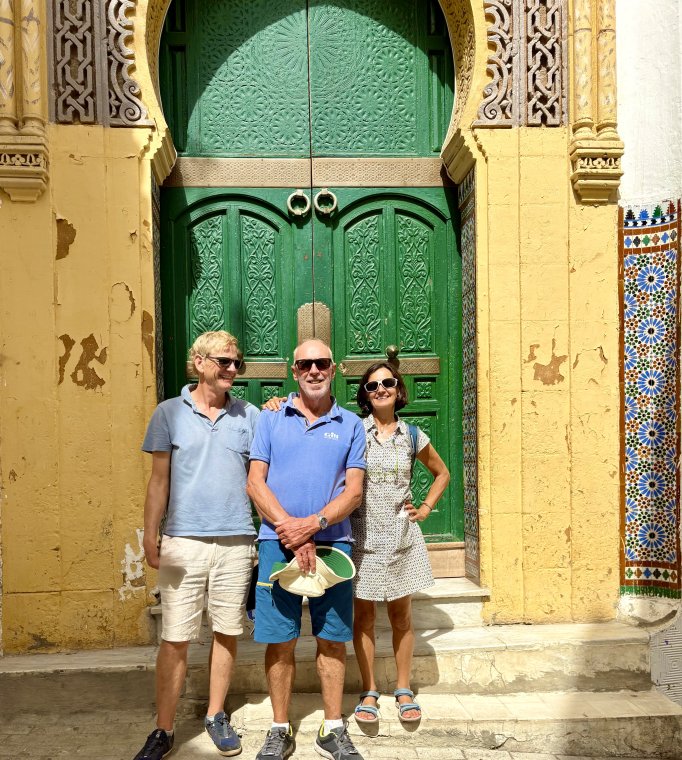 The streets of Tangier - vibrant and timeless.
The streets of Tangier - vibrant and timeless.
Our visit began at the Phoenician necropolis - a site of 98 limestone tombs cut directly into the cliffs, dating from between 1000–800 BC. Standing there, it was impossible not to marvel at the skill and effort required to hew these tombs from the cliff.
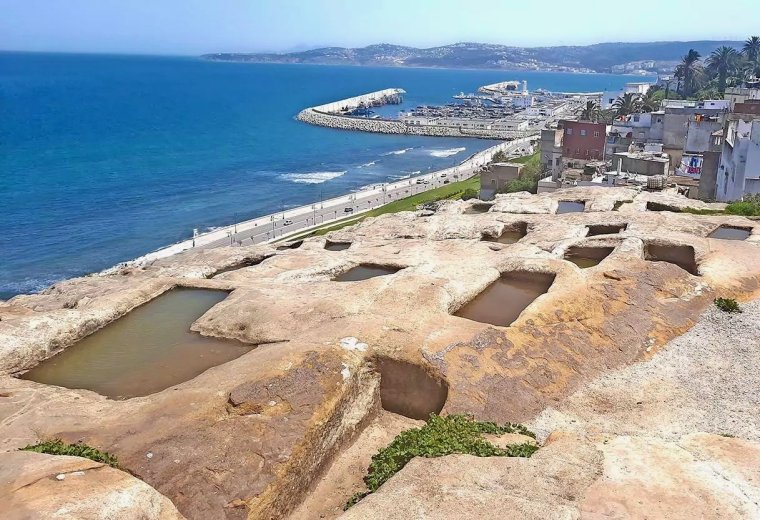 Tombs overlooking the marina and Strait of Gibraltar.
Tombs overlooking the marina and Strait of Gibraltar.
Next was the Kasbah - the fortified heart of the old city. Once home to the sultan’s palace, it’s enclosed within sturdy ramparts overlooking the Strait. It was a calming place - less whirligig than what lay outside its ancient archways, narrow lanes and quiet courtyards.
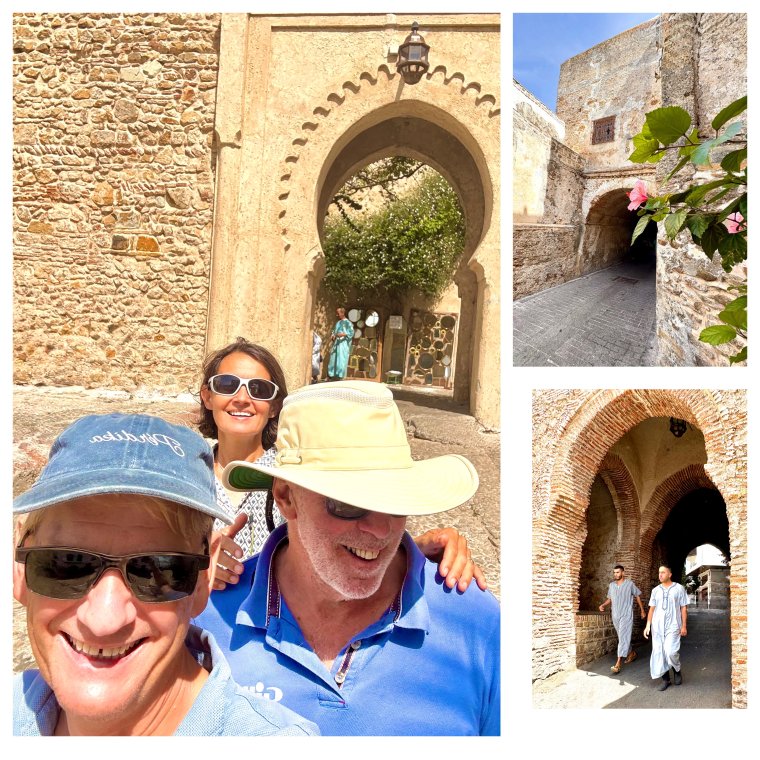 A city of contrasts - the tranquil Kasbah, a quiet refuge from the bustle beyond its ramparts.
A city of contrasts - the tranquil Kasbah, a quiet refuge from the bustle beyond its ramparts.
Lastly, we explored Tangier’s medina - the old walled quarter, a labyrinth of narrow alleys. We quickly learnt not to pause or look lost, the moment we did, in a flash a would-be guide appeared as if by magic - persistently assuming the role, until we politely but firmly declined. Even so, getting lost was part of the adventure. Each turn revealed something new - vibrant spices, colourful babouche slippers, intricate rugs and pottery. The medina gave us a vivid glimpse of daily life: worshippers in flowing djellabas emerging from mosques, merchants bartering, and a kaleidoscope of colour and scent at every turn.
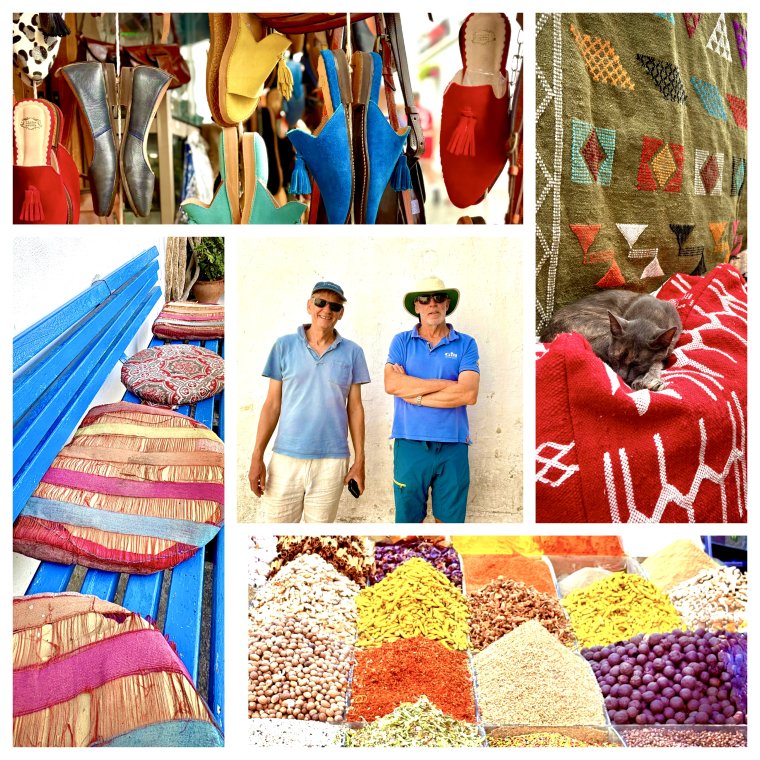 A kaleidoscope of colour in Tangier’s medina.
A kaleidoscope of colour in Tangier’s medina.
The warmth of the locals was striking. We left Tangier with a deep appreciation for the city and its people, and would have loved to linger longer, exploring more of Morocco. But essential work in Valencia and Gibraltar had already cost us over a week, and with Atlantic lows brewing, we needed to head south to the Canary Islands before the weather turned against us.
Fantastic… I’m enjoying following your adventures! Wish I was there too… stay safe 😉👌🙏